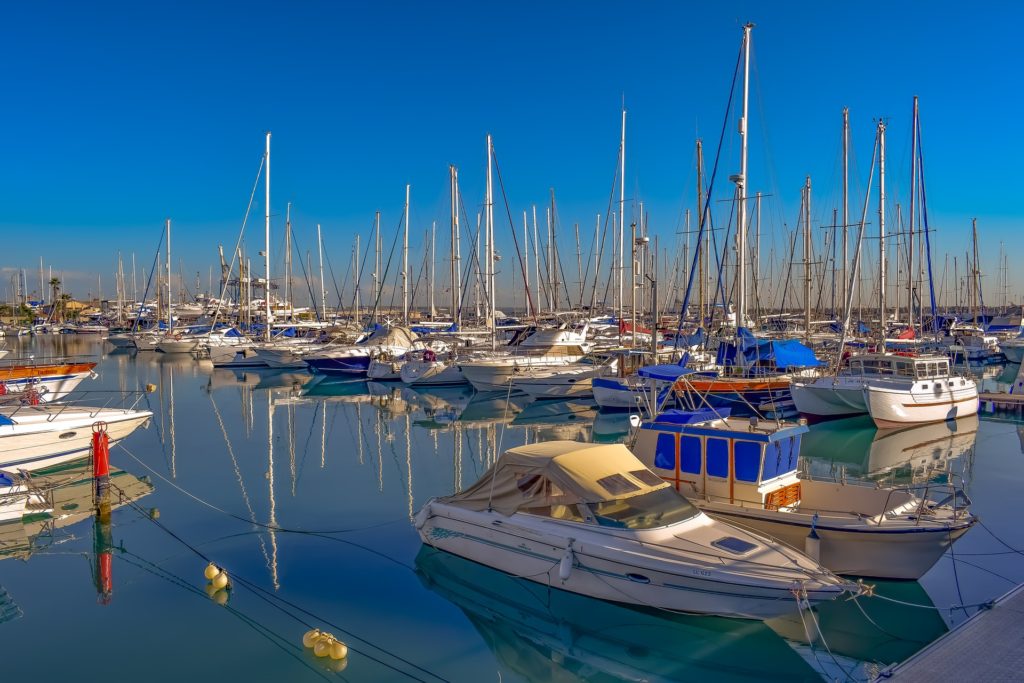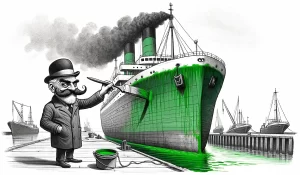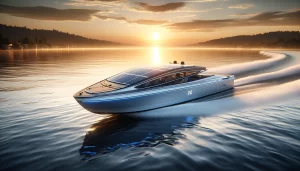Maritime decarbonization has come under increased scrutiny in recent years for its greenhouse gas emissions. Rightfully so, the international fleet of maritime vessels is responsible for nearly three percent of all human-produced GHG emissions. These 50,000 commercial ships are some of the biggest emitters, but often ignored are the tens of millions of recreational boats used for sport fishing, water skiing, or any other number of leisurely activities. What’s their impact on climate change and how do we decarbonize them?
Focusing just on the U.S., as of 2020 there are over 11.8 million recreational boats registered in the United States, or roughly one boat for every 27 people. These boats include motorboats, sailboats, personal watercraft, and a variety of other vessels that range in size from a half-dozen to more than a hundred feet long. The U.S. Coast Guard (USCG) estimates that there are an additional 13.4 million watercraft owned and operated, but not registered. However the majority of these are human-propelled craft like canoes, kayaks, and row boats which aren’t important to us from an emissions standpoint.
GHG Emissions of Recreational Boats
The USCG estimates that there are 11 million motorized boats in the U.S., nearly all of which use an internal combustion engine for propulsion. According to the Environmental Protection Agency’s annual greenhouse gas inventory these motorized recreational boats consume approximately 1,503 million gallons of gasoline and diesel fuel annually. This equates to 13.6 million metric tons of CO2 emissions each year, or about 40% of the aircraft emissions operated by United Airlines in 2019. Put another way: U.S. recreational boat emissions are slightly less than half that of the second largest airline in the world. This is not inconsequential.
In the grand scheme of things, recreational boats represent less than one percent of all transportation emissions in the U.S. However, in our race to zero emissions, every little bit counts. In fact, recreational boats are low-hanging fruit for decarbonization through electrification for several reasons.
Decarbonizing Recreational Boats through Electrification
Relative to other ship types, recreational boats are usually on the smaller side. More than 95% are less than 26 feet in length and have engines less than 250 horsepower (hp) which is about the same as a high-powered car. For example, this 21-foot boat from Boston Whaler is rated for 150 to 200-hp. Commercial boats tend to be larger in size and have bigger engines that require more energy for propulsion making them more challenging to electrify. Recreational boats still use more energy than a typical car, but not so much that it prevents them from being converted to all-electric propulsion. In fact there are already dozens of startups trying to carve off bits of this market such as Evoy, Navier, Arc Boat, XShore, Flux Marine, Candela, Pure Watercraft, and others.
If you thought car utilization was low, recreational boats are worse. According to a USCG National Boater Survey, motorized recreational boats were taken out on the water an average of 29 days per year across the country. To break this down further, each day of use translates to approximately seven hours. That’s about 203 hours a year (out of 8,760). A typical car is used approximately 310 hours a year according to the AAA. With such low utilization, this means boats sit idle for long periods of time which means plenty of time for charging.
Electric Boat Range Anxiety?
Amongst potential electric vehicle owners, limited range from the battery stokes apprehension, known as ‘range anxiety’. Range depends on a number of factors, but if we consider the 21-foot Boston Whaler mentioned above, it has a range of up to 230 nautical miles at a respectable 20 knots and a fuel tank capacity of 66 gallons. The fuel efficiency of this boat translates to approximately four or five miles per gallon. If this boat were a car it would make the worst gas-guzzling SUV look efficient, but as noted above boats need more energy than cars.
In the same way that you don’t typically drain your car’s gas tank in a single use, this does not mean that every boating trip needs a range of 100 miles or more. There are no published numbers on average boat distance traveled in a typical day’s outing, but we can make some reasonable estimates. Using the same Boston Whaler from above, assume that the boat moves at 20 knots for three hours of an average seven hour outing (basing this off my personal experience, probably an overestimate), this suggests a daily range of 42 miles. Electric boat manufacturer Navier claims that their all-electric vessel can achieve over 75 nautical miles range on a single charge at 20 knots.

When idle, motorized boats are either kept on land stowed on a boat trailer (most often at the owners house), or afloat at a dock in a marina. In either case, these boats have ready access to electrical connections. At the marina, electrical power is commonly provided via ‘power pedestals’ and equipped with 30-amp (A) or 50A breakers. At home, electrical outlets rated for 15A, 20A, or 30A are common. For context, most battery electric and plug-in hybrid vehicles are typically rated for 30A. If recreational boats were battery electric or plug-in electric, they could easily be charged where they are kept.
The Recreational Boat Opportunity
The U.S. market for recreational boats has been relatively stable over the past decade. In fact, during the pandemic sales of recreational boats increased according to an industry trade group, approaching levels not seen since pre-recession. Boats aren’t a basic mode of transport as is the family car, they are what we might consider a non-necessity. Despite this, Americans seem to have a strong demand for recreational boats and are willing to pay more for them than they would for the family car. According to loan data from LendingTree the average boat loan amount in 2020 was $61,513; the average new car loan amount was $39,721. It seems as though people are willing to pay more for boats, and perhaps the proverbial green premium for an electric boat might not be as much of an issue as it is for electric cars.
Recreational boats are a sizable market in the United States and are low-hanging fruit for electrification. Converting the 11 million recreational boats to battery electric vessels could help decarbonize the maritime industry, not only by reducing emissions but also by developing infrastructure that could service larger boats like ferries, tugs, and tour boats as they electrify too. Fortunately there are already a number of startups chasing this market opportunity and the future for recreational boating looks electric.




